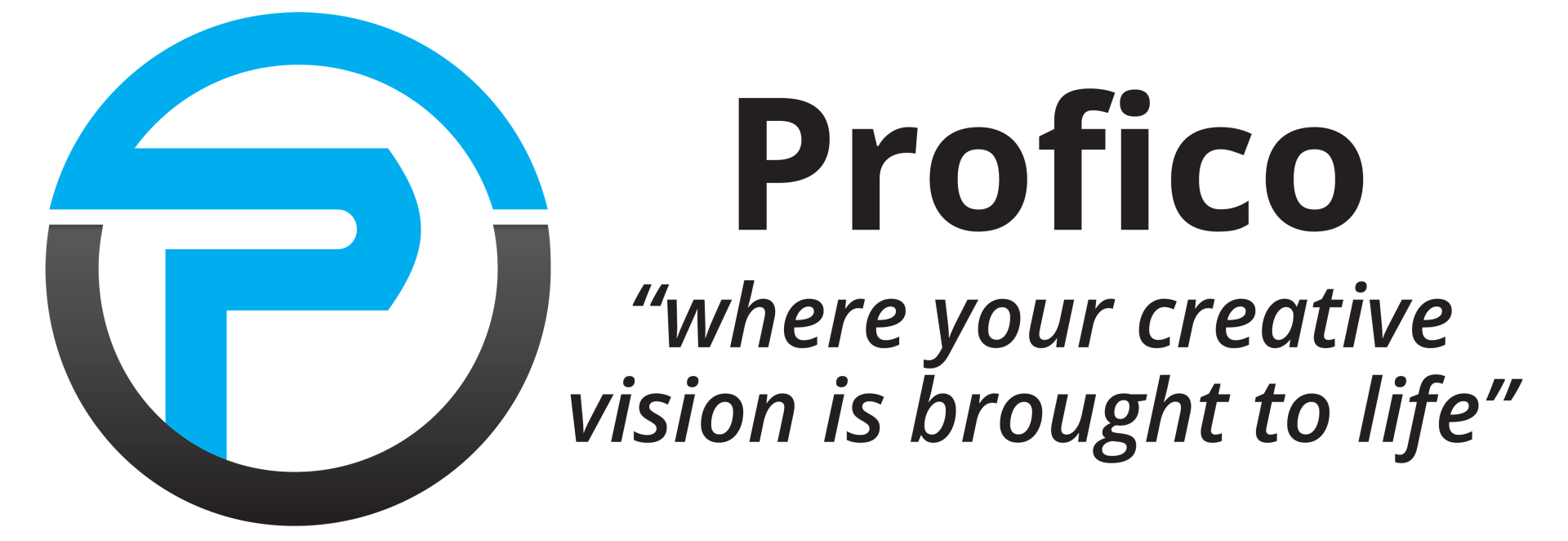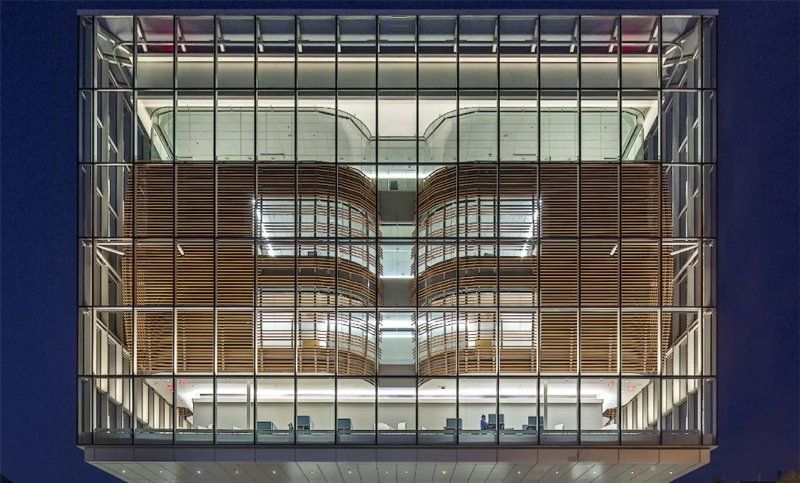
January 31, 2022
If you're seeking a comprehensive study and analysis of the Chemically Tempered Glass Curtain Wall market, our tempered glass curtain wall market report can serve as a valuable resource. It provides essential insights to facilitate a thorough understanding of your core market. By examining our report, you'll gain valuable information on key façade market channels across various global regions related to Chemically Tempered Glass Curtain Wall. This will enable you to grasp your niche market and identify key leaders within your segment, empowering you to make strategic decisions based on your strengths. The report encompasses crucial aspects such as market size, prospective demand generation statistics, supply chain details, competitor analysis, pricing dynamics, trading information, and vendor insights. Moreover, it delves into the profiles of key players in your market segment, offering deep insights into Chemically Tempered Glass Curtain Wall, its types, current and future trends, and overall market share. The report will provide a much-needed market forecast with factual data and figures, enabling you to make informed and actionable plans. By offering an all-inclusive picture of the market, key profitable opportunities can easily be identified, allowing you to capitalize on them and formulate strong, workable strategies. The information presented in the report is meticulously gathered from various publishers archived in our database, as well as from paid database services. This data is structured in a comprehensive manner following consultations with dealers, customers, and aluminum and glass raw material suppliers. As a result, the report contains genuine information and covers all details pertaining to the Chemically Tempered Glass Curtain Wall market. Chemically Tempered Glass Curtain Wall Market: Segmentation By Types Frame Support Curtain Wall Facades All-glass Curtain Wall Facades Point Support Curtain Wall Facades Unitized Curtain Wall Facades By Applications Commercial Buildings with Aluminum and Glazing Works Residential Buildings with Aluminum and Glazing Works Others Buildings with Aluminum and Glazing Works Chemically Tempered Glass Curtain Wall Market: Regional Analysis The report has thoroughly examined regional segmentation based on recent and future trends, providing forecasts for the entire prediction period. The countries covered in the regional analysis of the Global Chemically Tempered Glass Curtain Wall market report include: North America: U.S., Canada, and Mexico Europe: Germany, France, U.K., Russia, Italy, Spain, Turkey, Netherlands, Switzerland, Belgium, and Rest of Europe Asia-Pacific (APAC): Singapore, Malaysia, Australia, Thailand, Indonesia, Philippines, China, Japan, India, South Korea, and Rest of Asia-Pacific (APAC) Middle East and Africa (MEA): Saudi Arabia, U.A.E, South Africa, Egypt, Lebanon, Syria, and Rest of Middle East and Africa (MEA) South America: Argentina, Brazil, and Rest of South America This comprehensive coverage ensures that the report captures insights from diverse regions, providing a holistic view of the Chemically Tempered Glass Curtain Wall market on a global scale. Key Benefits of the report: Analytical Depiction: The report offers an analytical depiction of the global Chemically Tempered Glass Curtain Wall industry, presenting current trends and future estimations to identify imminent investment opportunities. Insights into Market Dynamics: It provides information on key drivers, restraints, and opportunities, accompanied by a detailed analysis of the global Chemically Tempered Glass Curtain Wall market share. Quantitative Analysis: The current market scenario is quantitatively analyzed from 2020 to 2027, shedding light on the growth trajectory of the global Chemically Tempered Glass Curtain Wall market. Porter’s Five Forces Analysis: Porter’s five forces analysis is utilized to illustrate the potency of buyers and suppliers in the market, aiding in understanding the competitive landscape. Competitive Intensity: The report offers a detailed global Chemically Tempered Glass Curtain Wall market analysis based on competitive intensity, providing insights into how the competition will evolve in the upcoming years. Major Points Covered in TOC: Market Overview: Research scope and objectives Key aluminum and glass manufacturers covered Market segments by type and application Study objectives and years considered Market Landscape: Analysis of competition in the Global Chemically Tempered Glass Curtain Wall Market by value, revenue, sales, and market share Competitive landscape, trends, mergers, acquisitions, and growth Market share and segments of top companies Profiles of Manufacturers: Detailed profiles of leading players based on sales region, key products, net margin, revenue, cost, and production Market Status and Outlook by Region: Analysis of net margin, sales, revenue, production, market share, CAGR, and size by region In-depth examination of the Global Chemically Tempered Glass Curtain Wall Market across regions and countries, including North America, Europe, China, India, Japan, and the MEA (Lebanon). Application or End User: Presentation of how different end-user/application segments contribute to the global Chemically Tempered Glass Curtain Wall Market Market Forecast: Production Side: Focus on production and production value forecasts Forecast for key manufacturers and production value by type Research Findings and Conclusion: Summary of the analysts' findings and conclusion of the research study Key questions answered in the report: What will the market development pace of Chemically Tempered Glass Curtain Wall market? What are the key factors driving the Global Chemically Tempered Glass Curtain Wall market? Who are the key manufacturers in market space relating to aluminum and glass? What are the market openings, market hazard and market outline of the market? What are sales, revenue, and price analysis of top manufacturers of Chemically Tempered Glass Curtain Wall market? Who are the distributors, traders, and dealers of Chemically Tempered Glass Curtain Wall market? What are the Chemically Tempered Glass Curtain Wall market opportunities and threats faced by the vendors in the Global Chemically Tempered Glass Curtain Wall industries? What are deals, income, and value examination by types and utilizations of the market? What are deals, income, and value examination by areas of enterprises? Source: www.constructionnewsportal.com

January 30, 2022
A recent research report by A2Z Market Research delves into the Global Construction Glass Curtain Wall market, offering a detailed analysis from 2022 to 2029. The Global Construction Glass Curtain Wall study provides a comprehensive examination of various segments including opportunities, size, development, innovation, sales, and overall growth trends of major players. Utilizing both primary and secondary statistical sources, the research report presents a blend of qualitative and quantitative insights. Among the key players profiled in the study are Technal, Schuco, Alumil, Raico, Pacific Aluminum, Aluk Group, CMI Architectural Products, Uniglas, Zahner, Schüco, Permasteelisa, SOTA Glazing, Vitra Scrl, Bertrand, Stabalux, STG-BEIKIRCH Industrieelektronik + Sicherheitstech, Aluprof, and Stahlbau Pichler. The report extensively analyzes the factors driving the growth of the Construction Glass Curtain Wall market, along with identifying the constraints that pose threats to its expansion. Through a consolidation of primary and secondary research, it offers insights into market size, share, dynamics, and forecasts for different segments and sub-segments, taking into account macro and micro environmental factors. Additionally, the report assesses the bargaining power of aluminum and glass suppliers and aluminum and glass buyers, the threat from new entrants and product substitutes, and the level of competition in the market. The report highlights key aspects of the market, including: Executive Summary: Provides a concise overview of essential studies, the growth rate of the Global Construction Glass Curtain Wall market, prevailing market trends, drivers, challenges, and macroscopic indicators. Study Analysis: Examines major aluminum and glazing companies, important market segments, the range of aluminum and glazing products available in the Global Construction Glass Curtain Wall market, the timeframe covered, and key points of analysis. Company Profile: Aluminum profiles each firm in this segment, evaluating their products, value proposition, SWOT analysis, capabilities, and other significant features. Manufacturing by Region: Offers data on imports and exports, sales, production, and key companies operating in all studied regional markets. Global Construction Glass Curtain Wall Market Segmentation: By Type: Frame Support Curtain Wall Stick Curtain Wall Unitized Curtain Wall All-glass Curtain Wall Point Support Curtain Wall Aluminum Doors Aluminum Facades By Application: Commercial Residential Others By Geographical Analysis: The Middle East and Africa (GCC Countries, Egypt, Lebanon, etc.) North America (the United States, Mexico, and Canada) South America (Brazil, etc.) Europe (Turkey, Germany, Russia, UK, Italy, France, etc.) Asia-Pacific (Vietnam, China, Malaysia, Japan, Philippines, Korea, Thailand, India, Indonesia, and Australia) The cost analysis of the Global Construction Glass Curtain Wall Market considers various factors including manufacturing expenses, labor costs, raw materials, market concentration rate of suppliers, and price trends. Additionally, it evaluates aspects such as the supply chain, downstream buyers, and sourcing strategy to offer a comprehensive view of the market. Buyers of the report will gain insights into market positioning, including factors like target clients, brand strategy, and price strategy, providing a thorough understanding of the market dynamics. Key questions answered in the report include: Who are the key market players in the Construction Glass Curtain Wall Market? Which are the major regions for dissimilar trades that are expected to eyewitness astonishing growth for the Construction Glass Curtain Wall Market? What are the regional growth trends and the leading revenue-generating regions for the Construction Glass Curtain Wall Market? What will be the market size and the growth rate by the end of the forecast period? What are the key Construction Glass Curtain Wall Market trends impacting the growth of the market? What are the major Product Types of Construction Glass Curtain Wall? What are the major applications of Construction Glass Curtain Wall? Which Construction Glass Curtain Wall Services technologies will top the market in next 7 years? Table of Contents Global Construction Glass Curtain Wall Market Research Report 2022 – 2029 Chapter 1 Construction Glass Curtain Wall Market Overview Chapter 2 Global Economic Impact on Industry Chapter 3 Global Market Competition by Manufacturers Chapter 4 Global Production, Revenue (Value) by Region Chapter 5 Global Supply (Production), Consumption, Export, Import by Regions Chapter 6 Global Production, Revenue (Value), Price Trend by Type Chapter 7 Global Market Analysis by Application Chapter 8 Manufacturing Cost Analysis Chapter 9 Industrial Chain, Sourcing Strategy and Downstream Buyers Chapter 10 Marketing Strategy Analysis, Distributors/Traders Chapter 11 Market Effect Factors Analysis Chapter 12 Global Construction Glass Curtain Wall Market Forecast About A2Z Market Research: The A2Z Market Research platform offers syndication reports sourced from global market researchers, providing ready-to-buy studies that offer valuable business intelligence. Our team of research analysts delivers comprehensive business insights and market research reports tailored to both large corporations and small businesses. We assist clients in developing effective business strategies and expanding their market presence. A2Z Market Research covers a wide range of industries, including but not limited to telecommunications, healthcare, pharmaceuticals, financial services, energy, technology, real estate, logistics, food and beverage, and media. Additionally, we offer analysis on company data, country profiles, emerging trends, and sector-specific information to support informed decision-making. Source: https://constructionnewsportal.com/news/199668/construction-glass-curtain-wall-market-is-expected-to-boom-alumil-raico-pacific-aluminum/
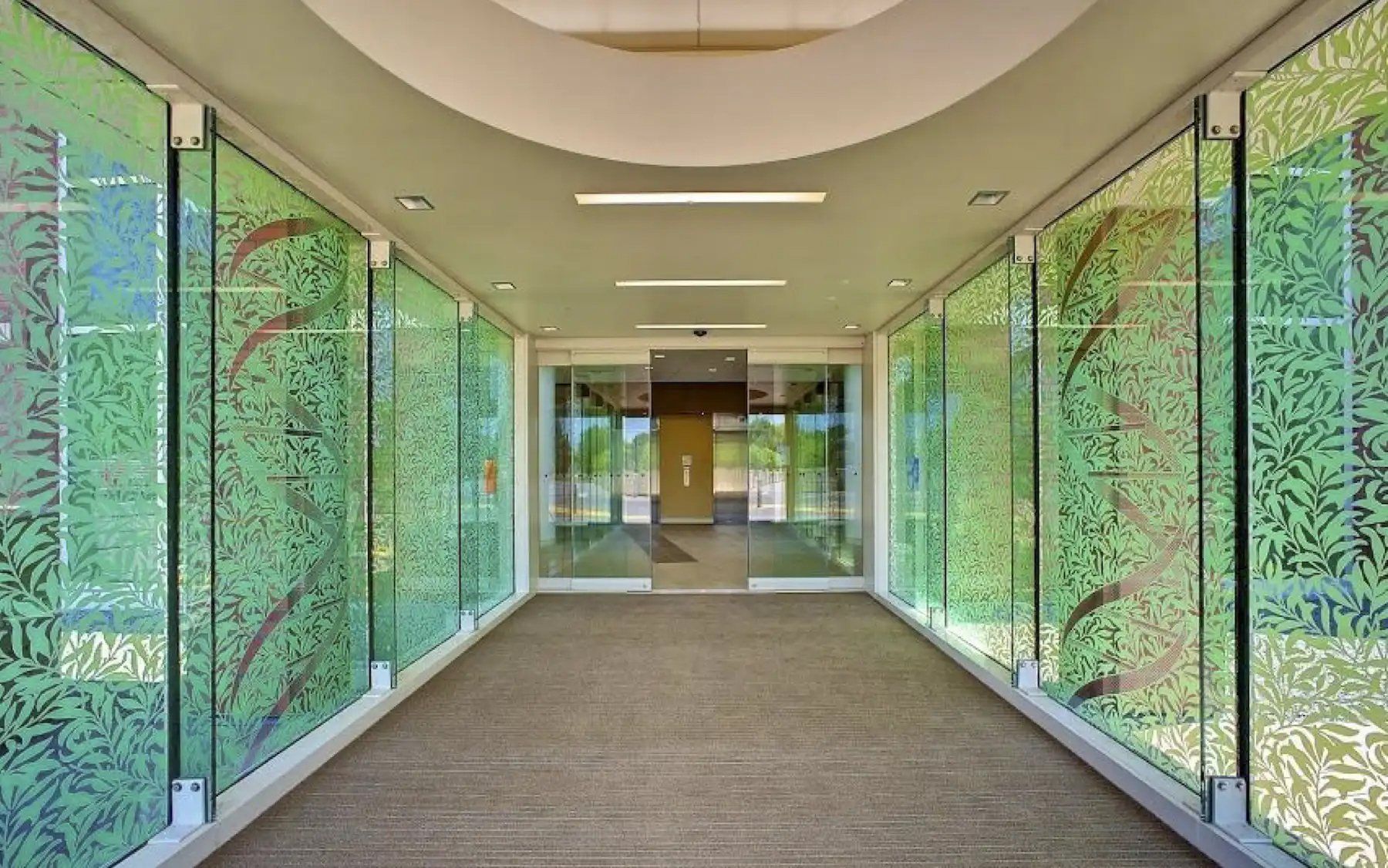
By Vitro Architectural Glass
•
October 27, 2021
In the realm of fine art, the choice of canvas is paramount for a master painter. Typically, a linen canvas is preferred over cotton, as it best captures and enhances the artist's true vision. Similarly, in the realm of glass manufacturers have made significant advancements in various aspects, such as energy efficiency. However, there still exists a significant disparity in how glass manufacturers address clarity and light transmission. This brings us to the distinction between conventional clear glass and low-iron (Extra Clear or Crystal Clear) glass.
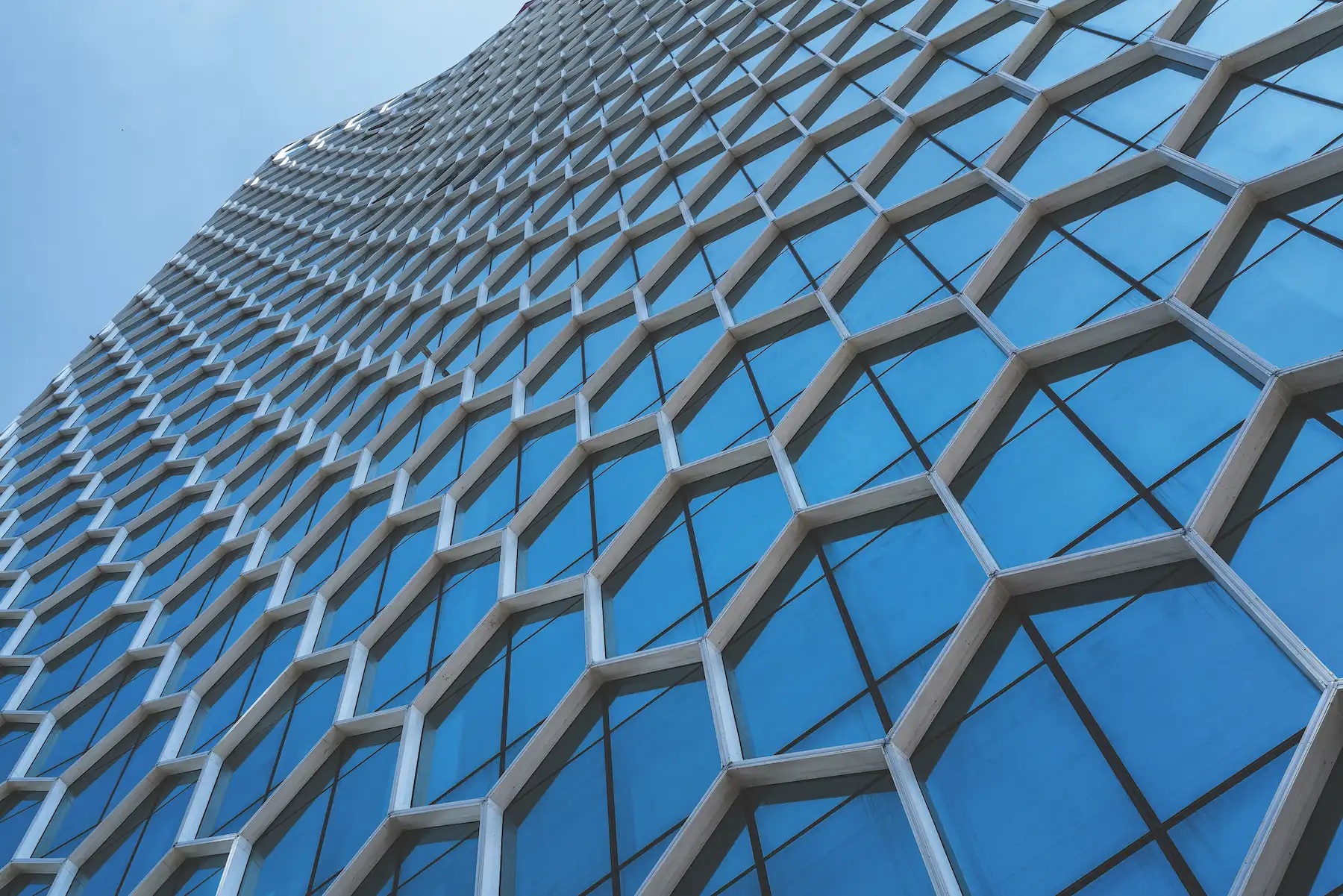
By BY DAVID FREY, AIA, LEED BD+C, DBIA, NCARB, TECHNICAL PRINCIPAL, HOK
•
October 26, 2021
The façade is one of the most important factors in shaping the overall aesthetics and performance of a building. At the same time, architects are under pressure to design façade as quickly and inexpensively as possible. This is particularly true within the design-build delivery format. But it also applies to the traditional design-bid-build process, where innovative façade concepts can easily fall victim to value engineering. How can architects ensure that a façade lives up to the aesthetic vision of the project while being cost-effective, high-performing, and quick to design, iterate and install? Understanding the following concepts can go a long way toward reaching a solution that works for everyone: · Active client and team communication · Early façade analysis and modeling · Choosing a delivery approach · Selecting the best wall system · Finding cost savings Active client and team communications As clients and project teams meet during pre-design to discuss issues such as programming, sustainability, massing, and orientation, the façade isn’t always a top priority. Yet just because the façade isn’t a focus of these conversations doesn’t mean designers should ignore the envelope during the early stages of design. Teams often face the difficult task of conceptualizing the façade simultaneously to concurrently with the development of programming, MEP, and structural system selections. For this reason, it’s important for teams to develop multiple façade design placeholders that can be conveyed to the client as early in the design process as possible. These concepts can then be refined and transformed as more information becomes available. Clear and open communication during this critical period streamlines what otherwise can be an unwieldy and complex process. This communication should be internal among the team and external with the client and other partners. Internally, a design team must be on the same page when it comes to the technical and aesthetic aspects of a project and be prepared to quickly vet how design iterations would impact the performance and budget of the building skin. Externally, teams need to be clear about costs and performance and, most importantly, understand how the façade—like the rest of the building—will reflect the client’s mission and values. Questions to ask the client include: 1. What are keywords that define your business or operation? 2. Rank the following values in order of importance: aesthetics, energy performance, construction cost, maintenance and operations, and tenant demand/retention. 3. What do you want people to feel and say upon seeing the building? What do you want people to feel and say when using the building? Once the client’s vision and goals are understood, the team can begin the process of developing the design and analyzing how it will affect building use and performance. Follow-up communications with the client will require meetings about the façade’s impact on energy use, daylighting, comfort, glare, building size, and costs. While these discussions can lead to design modifications, early modeling and analysis can prevent teams from having to make drastic changes late in the design and documentation process. Early façade analysis and modeling Energy modeling, thermal bridging analysis, and dew point analysis can all be performed early in design to inform façade concepts and ensure they comply with the project’s technical requirements. Energy modeling performed by the mechanical engineer will greatly influence the selection of materials, the mechanical system, and the overall requirements of the exterior enclosure. Energy modeling should begin during conceptual design, when results of the analysis can inform technical design parameters such as the ideal window-to-wall ratio (WWR)—the total vision surfaces of an exterior compared to its non-vision surfaces. Note: A building that appears to have an all-glass façade often is a combination of vision and non-vision exteriors. If robust energy modeling is not started until later, projects run the risk of significant redesign and value engineering during design development and construction documentation. This will negatively affect pricing and the quality of the contract documents produced by the design team and design-build subcontractors. Thermal bridging analysis , the conduction of energy through materials, can play a major role in façade design and material selection. As the exterior wall is being developed, technical issues around thermal bridging—R-values and U-values—can impact the design of the project. R-value is generally defined as the thermal resistance of a material or an individual component (i.e., how well it blocks heat loss). The U-value represents the thermal transmittance of an exterior wall, including all components (i.e., how well or poorly the assembly transmits heat from one environment—indoor/outdoor—to another). As a formula, R-value is the inverse of U-value (R = 1/U). Higher R-values and lower U-values represent higher levels of effective insulation. The R-values of individual façade components are often compromised due to thermal bridging of metals and fasteners that can transfer heat or cold through the exterior enclosure. For example, R-19 insulation in the cavity of an exterior metal stud wall assembly with significant thermal bridges could reduce the effective R-value of the insulation to R-7. Consequently, if the target U-value for the exterior enclosure is R-30, the assembly may require five to six inches of exterior insulation to achieve the required energy performance. Having this information early in the design phases can greatly improve the quality of the technical documentation, minimize the risks of redesign and provide more certainty in the cost estimation process. Dew point analysis tests a façade’s ability to reject harmful moisture and condensation. This analysis is important to conduct early to understand what will be required to safeguard the building from mold and material degradation. In conjunction with thermal bridging and energy modeling, dew point analysis can impact design direction, façade selection and performance, and the required technical documentation. Choosing a delivery approach Once a project moves from conceptual to schematic design, it’s time to consider how the façade will be designed and who will be responsible for its cost and delivery. For smaller projects, this can be performed in-house by the project design team. For larger and more complex projects, it’s often more cost-effective and expedient to work with outside experts through a design-build or design-assist partnership. The design-build approach engages a façade subcontractor who is responsible for engineering the technical aspects of the design, providing documentation and ensuring its delivery and installation at a fixed cost. This method can be more efficient than the traditional design-bid-build process. That’s because the technical aspects and total cost of the façade (generally $90 to $250 but sometimes as high as $400 per square foot) are known early enough to allow the team to modify the design as the cost and technical requirements are reviewed. The design-assist approach brings in an exterior wall subcontractor to assist the design team in developing and pricing the technical systems that will be put out for bid. It is important to note that design-assist requires the project team to complete a defensible façade design through the end of construction documentation. This is necessary because the façade sub who ultimately wins the project may have different technical solutions than those proposed by the design-assist subcontractor. It then becomes the project design team’s responsibility to ensure that the final technical solution adheres to the design intent, quality, sustainability, and construction requirements. Selecting the best wall system As just outlined, a subcontractor can help teams select the best technical system for a project. Even if a façade specialist is used, design teams need a general understanding of the three main types of building enclosures and their benefits and challenges. 1. Unitized curtain walls are prefabricated enclosures that fasten to the face of the floor slab to create an exterior “curtain.” Unitized curtain walls can be glass, metal, or a combination of many materials. Unitized curtain walls have numerous advantages over other systems. They are manufactured off site in a controlled factory environment and tend to have a high build quality, better air and water control, and significantly simplified field installation. On the downside, the manufacturing process relies on economies of scale (the more units created, the less expensive they are to build) and may not be cost-effective for projects without large areas of repeatable units. 2. Stick curtain walls are assembled on site and can provide a cost-effective alternative for unitized curtain walls. These façades have many of the aesthetic and technical performance benefits of unitized systems. However, field installation can be more time-consuming and quality levels can fluctuate due to the need for several disparate subs required for the final field installation. These are typically used on smaller, low-rise projects. 3. Window walls , unlike curtain walls, do not hang on the side of the building. These systems sit on top of the structural slab between floors and can be installed from the exterior or interior. While window walls are often less expensive than curtain wall systems, they have drawbacks. Compared to curtain walls, window walls can require multiple field installation steps and trades: iron workers, sealant installers, glazers, water proofers, and insulation installers. It also can be difficult for these systems to meet energy code requirements due to the reduced space for insulation between the face of the system and the face of the slab edge. Finding cost savings Most projects succumb to some measure of value engineering. When it comes to façades, the following design decisions can affect cost. Clear glass vs. low-iron glass —Clear glass often contains iron oxide, giving it a slight green tint when viewed from its cut side. Spread across the entirety of a large façade, clear glass can have a slight greenish tint. To achieve a more transparent appearance, designers may opt for low-iron glass, which is pricier but offers greater transparency. Comparing samples of standard clear glass and low-iron glass can help assess the differences. Fins vs. no fins —Building fins serve both functional and aesthetic purposes by providing shading and architectural interest. However, thorough analysis is required to ensure that the depth and positioning of fins effectively reduce energy consumption. Shadow boxes vs. spandrel glass —When considering non-vision sections of a building enclosure, such as spandrel areas, designers often weigh the use of shadow boxes versus spandrel glass. Shadow boxes, which create depth and variation in appearance similar to vision sections, are favored by designers for their aesthetic appeal. However, spandrel glass, coated with a ceramic frit, can achieve a similar appearance without the need for additional cavity space, making it a more cost-effective option. However, it's essential to approach shadow boxes with caution due to potential issues, especially regarding cavity management. Non-vented shadow boxes may experience condensation problems if not adequately sealed, while vented cavities can permit dust and dirt ingress. Therefore, careful consideration and understanding of these issues are necessary when selecting and implementing shadow box designs. Floor-to-floor and ceiling height reduction —The decision regarding the building's MEP (Mechanical, Electrical, and Plumbing) and structural systems can significantly influence the cost of the building enclosure. Opting for systems that increase the floor-to-floor ceiling height may also result in an overall increase in the building's height and consequently, the total square footage of the exterior enclosure. Therefore, it's crucial for design teams to carefully assess how these various systems interact and their collective impact on the building's height. This evaluation ensures that the chosen system remains cost-effective while considering other aspects of the building, including the façade. Final takeaways In conclusion, achieving the aesthetic and sustainability objectives of a building's exterior enclosure necessitates a proactive approach from project teams right from the initial stages of design. It's essential for design teams to maintain transparent, early, and consistent communication with the client, contractor, and subcontractors throughout the entire process of selecting, documenting, and installing the façade. Through ongoing analysis and testing of the design, teams can guarantee that the façade aligns with the client's performance and budgetary requirements. This collaborative and iterative approach ensures the successful realization of the project's goals. Source: https://www.bdcnetwork.com/facade-design-cost-performance-and-delivery-aia-course
